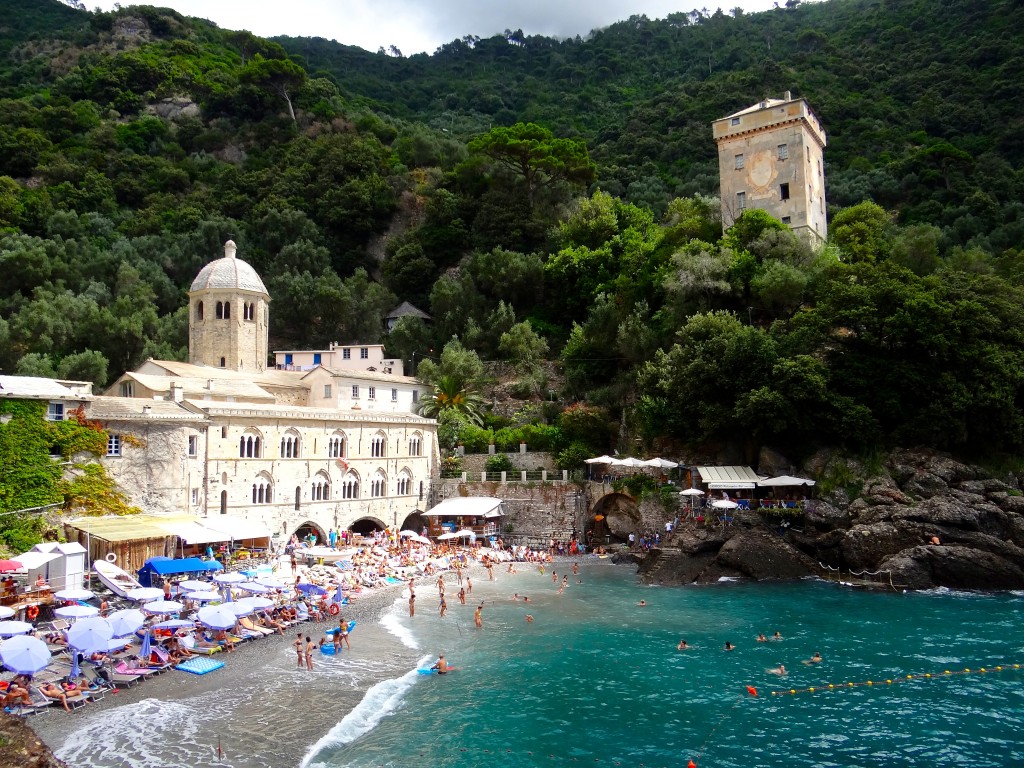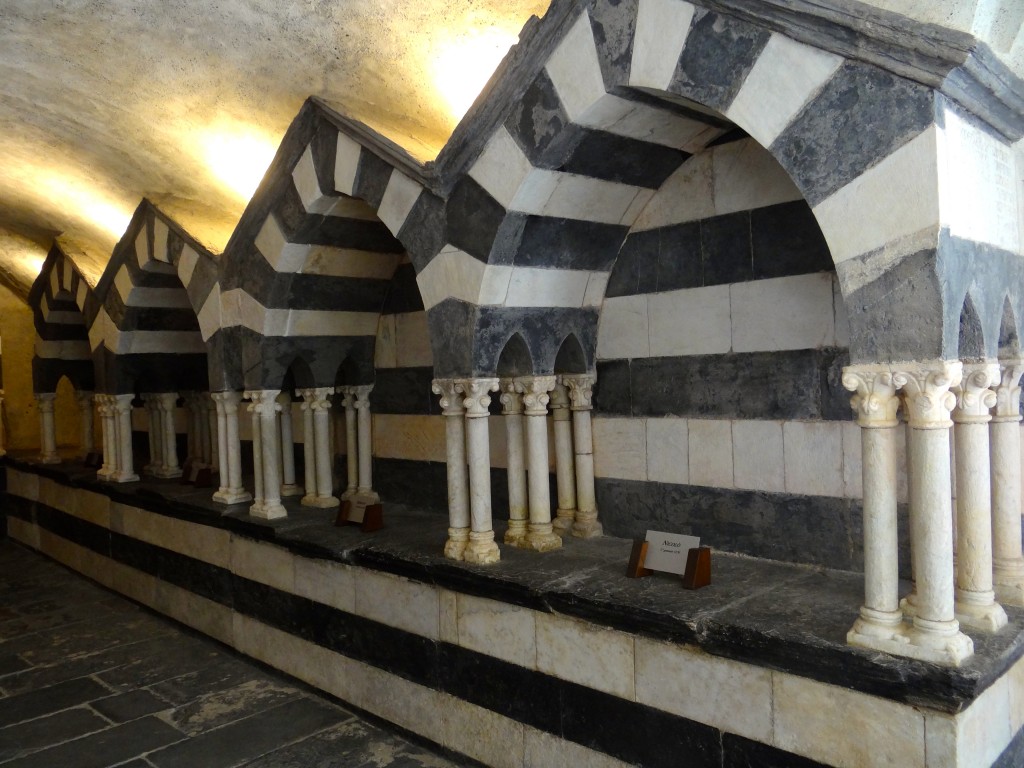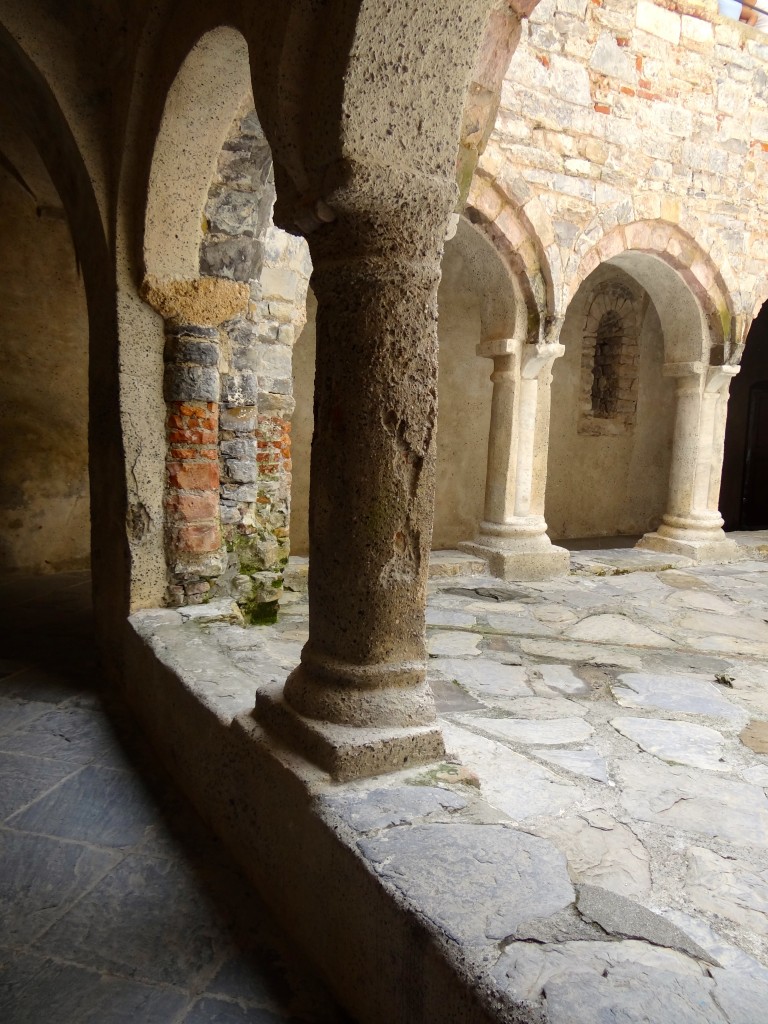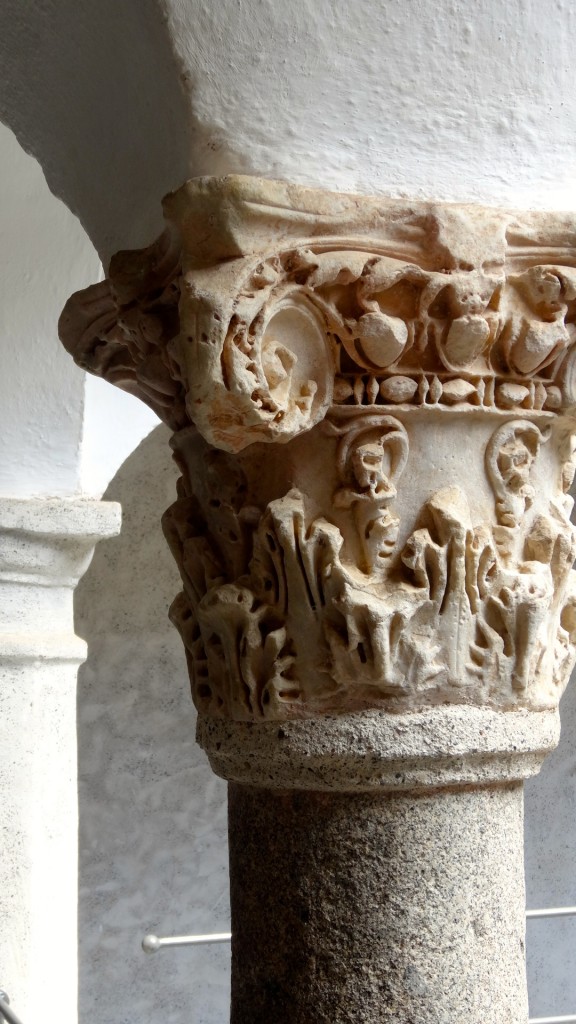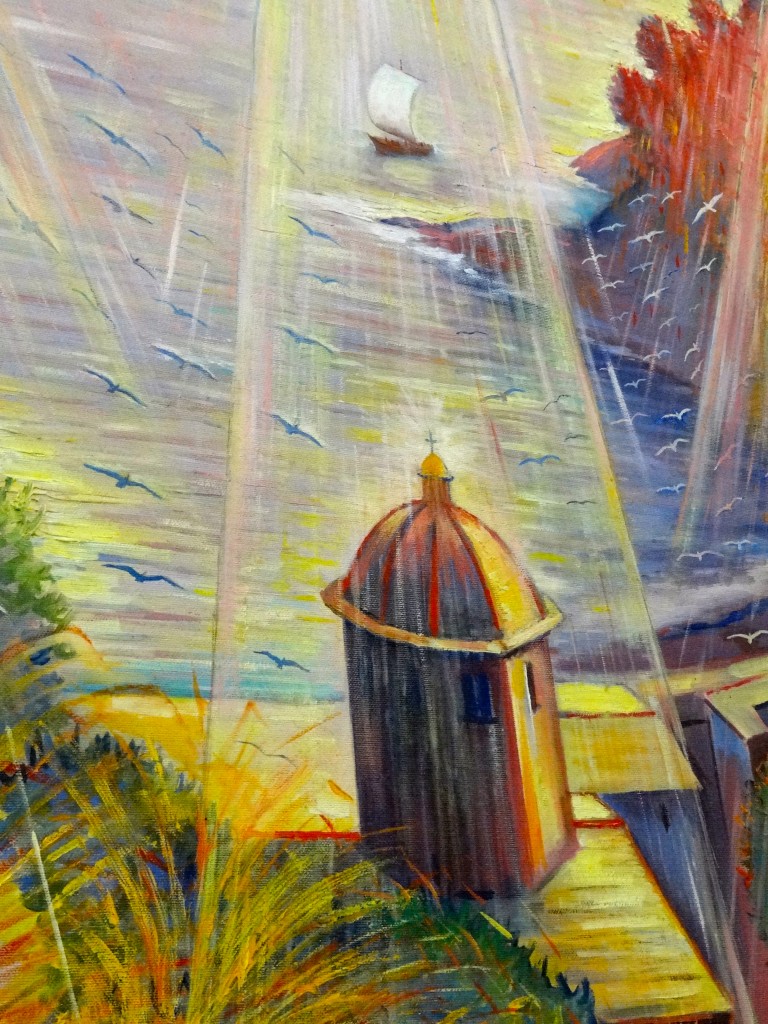 The first hint of the history and mystery of this place comes as you round the edge of a cove on Italy’s Ligurian coast, between Camogli and Portofino. High on a cliff above the secluded Capodimonte Bay is a watch tower. The Saracen pirates showed up here sometime around the 9th century and basically destroyed the place. Lesson learned.
The first hint of the history and mystery of this place comes as you round the edge of a cove on Italy’s Ligurian coast, between Camogli and Portofino. High on a cliff above the secluded Capodimonte Bay is a watch tower. The Saracen pirates showed up here sometime around the 9th century and basically destroyed the place. Lesson learned.
But first came Prosperus, the bishop of Tarragona, fleeing the Arab invasion of Spain in the 8th century. Prosperus brought with him the remains of Bishop Fruttuoso, martyred in Tarragona in 259 A.D.
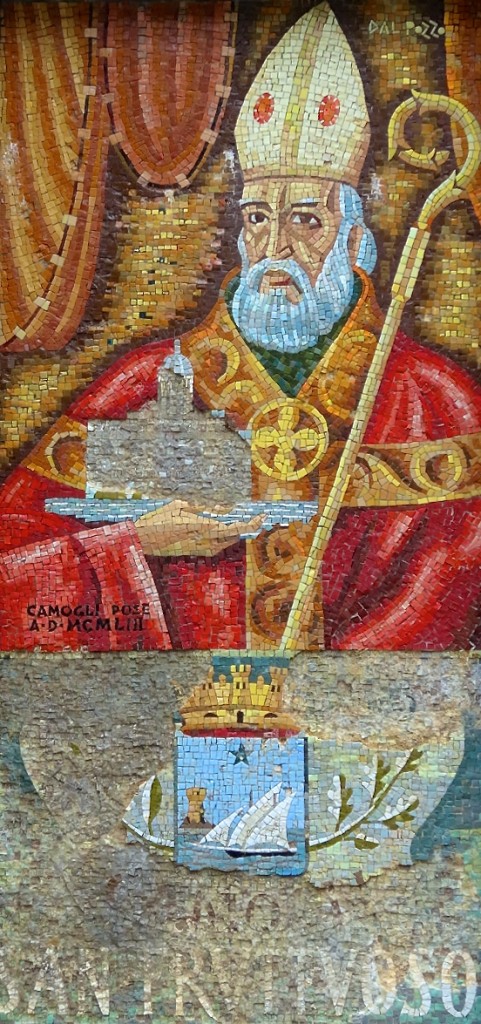 According to legend, San Fruttuoso spoke to his followers in a dream, telling them of a hidden cove where he wished to be buried. Prosperus and the monks who accompanied him were to look for three things: a dragon, a cave and a spring of water. Seriously, who goes looking for a dragon? But luckily for them, their angel guide turned the beast into dragon patties. And when Prosperus and the monks discovered a small cave and a spring, they put down anchor and built an abbey which became San Fruttuoso’s resting place.
According to legend, San Fruttuoso spoke to his followers in a dream, telling them of a hidden cove where he wished to be buried. Prosperus and the monks who accompanied him were to look for three things: a dragon, a cave and a spring of water. Seriously, who goes looking for a dragon? But luckily for them, their angel guide turned the beast into dragon patties. And when Prosperus and the monks discovered a small cave and a spring, they put down anchor and built an abbey which became San Fruttuoso’s resting place.
But all did not end well. Eventually, the marauding Saracens showed up and made a total mess of things.
Empress Adelaide of Burgundy came to the rescue and rebuilt the abbey in the 10th century. The abbey prospered and the cult of San Fruttuoso spread throughout the region, where he was believed to be the protector of sailors.
There are only two ways in and out of this place — by boat or by foot, along the paths that climb the steep slopes surrounding the bay. No road comes here. Ferry boats bring tourists and supplies. On the day of my recent visit, a crate of potatoes and some cases of wine were delivered to the dock. With vino on tap, you could ride out a storm here.
In summer, the Abbey of Fruttuoso looks more like a beach club. The pebbly waterfront is packed with sun beds, umbrellas, camp kids and holiday-makers. I slowly made my way around beach towels and tanned legs and headed for a stone archway under the abbey where a sign pointed the way.
This wasn’t my first visit. I’ve been to the abbey on much quieter days. I lingered on the beach one afternoon after most of the day-trippers had gone, imagining Prosperus sailing into the cove.
The abbey itself has an interesting history. By the 13th century, it had fallen into decline and the Doria family (as in Andrea Doria) underwrote the restoration and expansion of the complex. They built their own tower to guard against the Turks (there were some bad dudes trolling this coastline back in the day). The grateful monks gave the Dorias a family mausoleum under the abbey that still survives today.
In 1915, a flood severely damaged the church and the debris formed a beach in front of the abbey.
Sun worshippers are glad of that on a summer’s day. The cacophony of laughter, shouting, and rasping cicadas is almost unnerving.
But if you time your visit just right, you can experience the real spirit of this place. Who knows – you might bump into a pirate, a monk or an angel in the cloisters of the abbey.
{ 4 comments }
